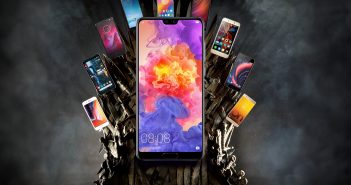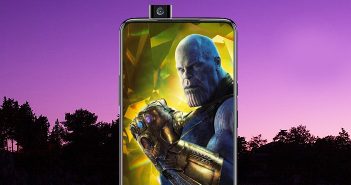The market is all brimming with hundreds and thousands of Smartphones. Each mobile has something unique to offer. Some are meant for calling and messaging while others are multi-purpose. Few mobiles flaunt their advanced camera capability while others boast for large screens with good display and monstrous RAM. Today consumers love choosing a device that offers best of both the worlds.
Phones can be differentiated into various genres, each suitable for some purpose. Finding the one that would suit your requirement is certainly an arduous task. We have tried to segregate different aspects of a mobile phone that will help you choose that ‘just right’ device for you.
Screen Size/Display:
In the present scenario, the screen-size of a mobile phone has become a crucial factor. Currently, mobiles come in screen size ranging from 2.4 inch to 6.5 inch (measured diagonally). Look at the general classification of cell phones as per their screen sizes.
- Choose a smartphones with screen size less than 3 inches if they have a physical keypad too. Else you can neither enjoy the touchscreen benefits nor reap the fruits of a keypad.
- Cell phones with 3 to 4 inch are decent for the average user. However, they aren’t great for gamers or someone who has to do lot of emailing and checking documents.
- 4-5 inches screen smartphones are ideal and choice of many consumers as they are neither too big nor too small. 6 inch and bigger screen phones are generally bulky and generally have lower battery back-up.

Keypad:
There are various types of keypad which serve various purposes.
- Alpha Numeric: Traditionally found in older and features phones typing on these keypads are very tiresome and time consuming.
- Half QWERTY: A better version than alpha-numeric keypads, Half QWERTY keypads are gradually becoming extinct.
- Physical Full QWERTY: This is the most popular keypad that has made typing much easier.
- Touchscreen: With increasing size, most smartphones these days come with touchscreen keypads which can be a full QWERTY one or an alpha numeric one – you can switch between them at will. Some advanced touchscreen keypad applications also claims to make typing faster by recognizing your typing pattern.

Battery:
Mobiles with long battery are the need of the hour. Complex apps, heavy multitasking, playing games all drain the Smartphone’s battery very quickly. If you too are frustrated because of the dying phone battery life check out what battery type you must choose as per your need and lifestyle
- Type:
1. Li-Ion & Li-Po: Smartphones these days are either equipped with Lithium Ion or Lithium Polymer battery. However, the latter (Li-Po battery) is considered a bit advanced, is sleeker and holds more charge than their Li-Ion counterparts.
2. Removable/Non-removable: Non-removable battery phones are sleeker than the ones with removable battery. Non removable battery phones are also extra secure as there is less chance of water getting into the phone and damaging it. However, a pro with removable battery phone is that one can take out the battery to restart the phone. Also in the long run, you cannot change batteries in non-removable battery phones. - Size: The bigger the battery, the better and higher would be the running time of the phone. However, a downside of battery size is the increase in the weight of the smartphone. A mobile with 5.5 inch or bigger screen should be above battery power of 2500 mAh and above. A 1500mAh battery is considered ideal for cellphones with 5-5.5 inch screens. 4-5 inch screen on the other hand must have a battery of not less than 1200 mAh.
- Talktime: This determines how much the smartphone can be used with one full charge continuously on the respective networks. It is differentiated into 3G and 2G talktimes. However, one must also ensure the video and music playback time.
- Standby Time: This feature is very important while you are travelling. Standby time denotes for how long the smartphone keeps up the charging when not in use.

SIM Slots:
A phone can have a single SIM, dual SIM or even three SIM slots (rare these days). Choose wisely on the basis of your requirement. Besides, mobiles also support micro SIM, mini SIM or nano SIM and full SIM slots.

Network:
- 2G: Low cost and less feature phone come with 2G only connectivity. It means you cannot use your SIM connectivity to access 3G.
- 3G: In most high end and mid range dual SIM phones, usually one SIM is meant to access 3G network while the other is meant for 2G networks. So, you can have both – 2G & 3G Service.
- 4G/LTE: With the advancement the technology, 4G is the big wave of future. Most phone today support 4G network. It is advisable to choose 4G Mobile Phones which is very important for future.

Connectivity:
- WiFi: Having this feature helps you to access internet or share files by connecting to a nearest WiFi hub.
- WiFi Hotspot: You can create a WiFi hub and share internet with others
- Bluetooth: It is a wireless technology which enables exchange of data over short distances without internet or wires.
- USB port: Micro USB ports help to transfer files from your smartphone to your PC or vice-versa.
- NFC: Near Field Communication or NFC establishes radio communication with each other by touching them together or bringing them into close proximity.
- HDMI: Enables you to connect your smartphone with your HDMI TV via an HDMI cable. Today, no smartphone come with full HDMI port (mini or micro HDMI port). However, you may find phones with MHL port that allows you connect the device with the HDMI TV via a MHL cable.
- DLNA: DLNA (Digital Living Network Alliance) allows you to wirelessly connect your mobile to an HDTV or other DLNA-enabled device for sharing movies, videos, and pictures on your HDTV. With FM receiver you can listen to FM radios
- GPS: Having GPS feature helps you take full advantage of maps applications like Google Maps. GPS helps you accurately pin-point your current location.

Camera:
Well if you are a photography lover or someone who is quite addicted to selfie, or someone who wants to purchase a mobile just for camera then give due attention to various features mentioned below:
- Resolution: A higher number of pixels results in higher-quality images.
- Rear camera: A 5 megapixel rear camera is considered as the bare minimum range for rear camera. Front cameras are mostly mante for selfies or video chatting. For decent self-portraits pictures you would need atleast a 2 megapixel unit.
- LED Flash: This helps you capture good images in low light. Double LED flashes are considered much better.
- 3D Capture: Mobiles with dual rear cameras can capture 3D videos.
- Autofocus: This is a highlt desirable feature that allows the smartphone to automatically judge which subject in the frame of view to focus on like face detection.
- Burst Mode: This mode allows capturing short, rapid fire burst of photos within few seconds.
- Zoom: (Optical and Digital) Phones with digital zoom have in-camera adjustment where the outside of a picture are cropped. New genre camera mobiles like Galaxy S4 Zoom come with optical zoom. Suvh phones allow automatic lens adjustment to take a close picture of the shot. Thus optical zoom is better than digital zoom.
- Image Stabilization: This feature reduces blurring due to motion of camera.
- Panorama: It is a feature which stitches multiple images together to create a wide image.
- Sound & Shot: Allows a phone to record a video with sound bytes in the background.
- Video Recording: Video recording with rear cameras are normal. However, one must check out at what rate they can do so. The best rate so far for smartphones is 30 frames per second. Higher the frame rate better the video would be to watch.
- Check our list of Good Camera Phones

Processor:
- Number of Cores: Love speed? Are you a multi-tasker or a gaming addict? Choose a phone with higher number of cores. You can find Dual Core Mobiles, Quad Core Mobiles, Hexa core Mobiles or even Octa core mobiles. Currently deca core mobile phones are the talk of the town. They provide insanely fast speed to phones.
- Clock speed: It is the speed at which the processor executes instructions. Higher the clock speed the better the performance of the phone.
- Type: There are a range of processors like Snapdragon, Nivdia, Intel, Mediatek etc Each have their own pros and cons. Mediatek chipsets are cheaper and are found in most mid range mobiles.

Memory:
- RAM: It is quite obvious that higher RAM results in smoother performance. A 512 MB mobile is an average, yet well-optimised smartphone can handle mild games and do multi-tasking. Most standard phones today offer 2GB RAM which gives good multi-tasking ability. With more and more apps that are getting flooded in the market and the rising addiction of mobile gaming, you may find Smartphones with 3GB RAM, 4GB RAM or even 6GB RAM Mobile Phones. Choose the one as per you budget and requirement.
- Internal: Many apps cannot be installed on external SD card. Thus, internal storage is so important. You may find smartphones with minimum 4 GB internal storage or maximum of 128 GB storage.
- External: Most smartphones memory is expandable via a micro SD card slot. Normally, mobiles offer with 32 GB external card slot. However, high end devices offer up to 64 GB of storage slot.

Sensors:
- Ambient Light Sensor: Detects the amount of light and automatically adjusts the brightness of the screen.
- Proximity Sensor: Senses when you hold the phone against your face and disables the touch screen. This helps to avoid accidental hanging up the call.
- Accelerometer: Detects movement required for screen rotation / gaming.
- Gyro sensor: Senses angular momentum required for playing games
Other Features:
- Scratch-Resistant Glass: Choose a phone with Scratch resistant glass like Gorilla glass. It protects your smartphone from accidental damage.
- Water Proof: Most flagships are now introducing water proof mobile phones that can be immersed under water. A device with IpX7 or above rating can survive underwater immersions.
- Water Resistant: Such mobiles can withstand splashes only. They can’t be immersed under water. Water resistant devices get IPX6K to IPX0 rating (X stands for their dust resistance capability) for their water repelling ability Devices with water repelling coating are also considered water resistant.
- Dust Proof: Mobile phones are classified in a scale of 0-6 depending upon the level of resistance against dust. Usually, the first digit in IP rating (ex. IP67) indicates the level of protection. A phone with IP67 rating is fully protected from dust.
- Shock proof: To ensure minimum shocks, handsets get some extra layers of protection. These handsets can withstand falls from certain heights. Sometimes they work even if get hit by a certain measure of force. Such devices are suitable for people for harsh usage.

Additional Features:
- Fingerprint Sensors Mobiles: The biggest and most popular add-on feature for Smartphone is the fingerprint sensor. It’s quite amazing to see the simple fingerprint sensors incorporated in devices ranging Coolpad Note 3 to the premium iPhones. These simple fingerprint sensors are provided to beef up the layer of security on the device. Devices with the fingerprint sensor on the rear, below the camera module, are most liked. The reasons are quite simple – a comfortable placement position for the index finger! In addition, it can double up as a camera trigger while taking selfies. Another important feature will be to perform NFC-based payments that are sure to grow in the next few years.
- Iris Scanners: Amidst the peak of development of biometric fingerprint scanner, Irirs Scanner phones have made their way in the world of Smartphones to intensify the security factor. Fujitsu is the first mobile phone one who debuts in a whole new realm of biometric iris recognition sensor technology. Next the Samsung Galaxy 7 comes with biometric Eye scanner technology. As per many tech experts, eye scanning method is much more secure than fingerprint scanning in terms of encryption and fairly convenient too. In contrast to fingerprints that can be affected by factors like cuts and dirt, Iris scanning is accurate and also fast.

After Sales Service:
Finally, coming to the most relevant and important factor while buying a Smartphone is the after sales service. The biggest complaint with most Chinese Smartphone players in the Indian market is the absence of a dedicated customer service division. Therefore more companies producing their products in India and setting up multiple service centers throughout the country. Because it is quite easy to get a Samsung Mobile phone repaired, rather than getting a YU Mobile Phone repaired.




